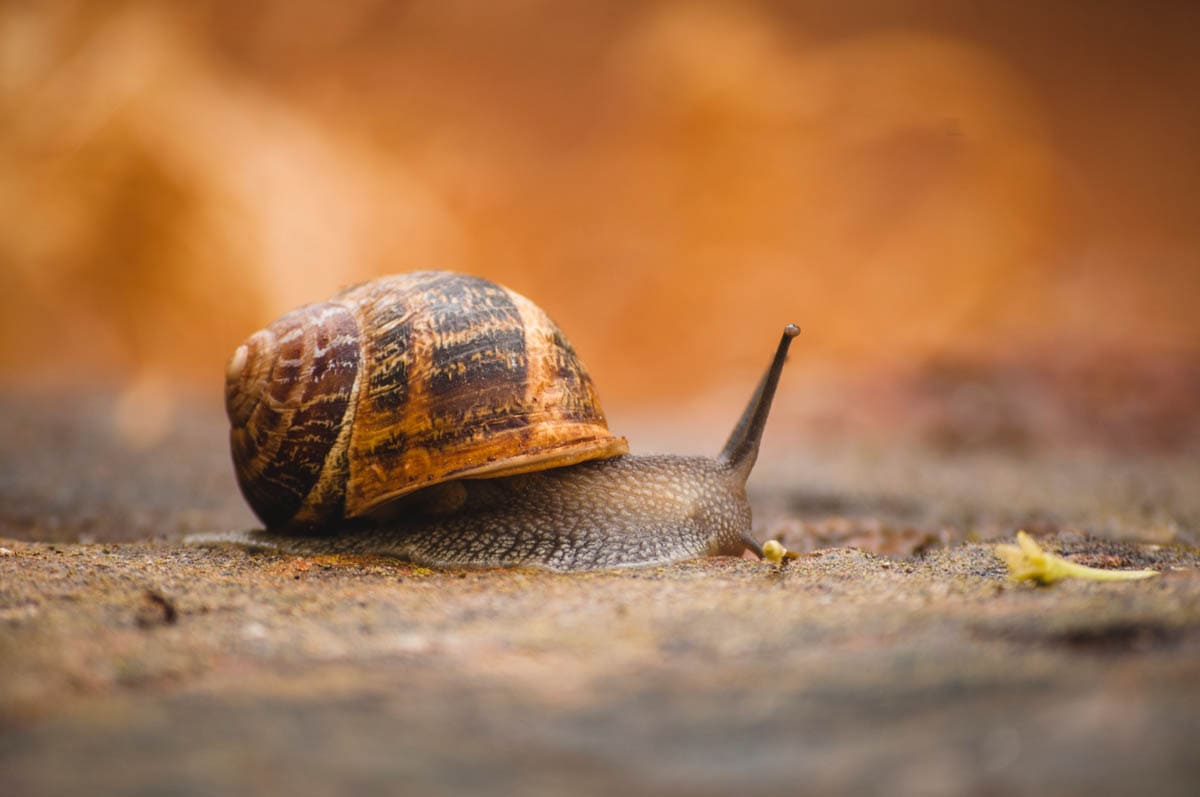Although seen more commonly in dogs than cats, snail bait poisoning does occur in cats too. Snail bait contains one of two poisons, metaldehyde, and methiocarb, both of which can be fatal to cats if ingested. These products typically contain around 3% poison and the rest contains bait such as bran or molasses which are not only attractive to snails and slugs but also other animals.
- Metaldehyde comes in green pellets.
- Methiocarb comes in blue pellets.
Bait may also come in powder form, which sticks to your pet’s coat and paws and can be licked off. The lethal dose is 100-300 mg/kg) [1]. Some snail bait manufacturers also add a bittering agent to deter pets and children, however, this will not put some pets off. If you must use snail bait, ensure your pet doesn’t have access to the treated area and don’t pile it up.
Ingestion can be fatal, only a small amount of snail bait is enough to kill a cat.
Symptoms
Both metaldehyde and methiocarb are neurotoxins, which stimulate the nervous system. Symptoms occur soon as soon as an hour after ingestion and can include:
- Muscle twitching/tremors
- Change in behaviour, anxiety, excitability etc
- Ataxia (loss of coordination)
- Rapid heart rate
- Vomiting
- Diarrhea
- Increased salivation
- Increased heart and respiratory rate
- Fever
- Seizures
- Loss of consciousness
Increased muscle activity due to tremors causes hyperthermia (an increase in the cat’s body temperature), which can cause brain and organ damage.
Diagnosis
Take along the packaging to the veterinarian so he can check the active ingredients and tailor treatment to the particular poison.
Your veterinarian will perform a physical examination of your cat and obtain a medical history from you. He may be able to reach an early diagnosis with the following information:
- History of exposure to snail bait
- Examination of the stomach contents
Your veterinarian may also wish to perform the following tests:
- Biochemical profile, complete blood count, and urinalysis to evaluate the overall health of your cat
- Arterial blood gas test
Treatment
There is no antidote to metaldehyde poisoning, however, atropine can be used as an antidote to methiocarb toxicity.
Treatment for both is aimed at preventing further absorption of the poison and controlling symptoms.
Gastric decontamination:
- Induce vomiting if the ingestion occurred within two hours
- If inducing vomiting is not possible, your veterinarian may choose to pump the stomach instead (gastric lavage).
- Activated charcoal to bind to the toxin, to prevent further absorption.
Manage symptoms:
- Muscle tremors can be controlled with medications such as methocarbamol.
- Medications such as diazepam (Valium) or fentanyl to control seizures and muscle tremors.
- Cats who fail to respond to the above medications may require anesthesia.
- Fluid therapy to correct acidosis (high levels of acid in the blood) and dehydration. This will also help to flush out the poison
Safe alternatives
Pet owners should avoid the use of snail bait containing poisons if possible and switch to safer options.
- According to this site, adhesive copper tape can be used to deter snails and slugs
- Fill a container with beer which will attract the slugs. Once in the container, they will drown
- Handpick and place any snails/slugs in boiling water
- Crushed eggshells around the base of plants
References:

